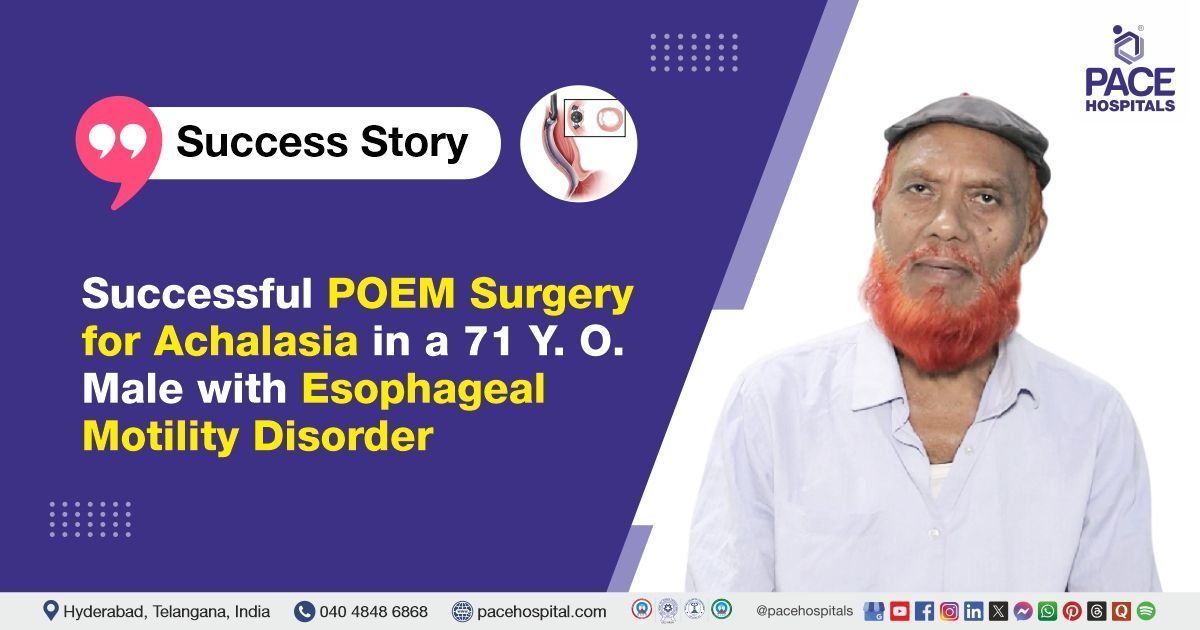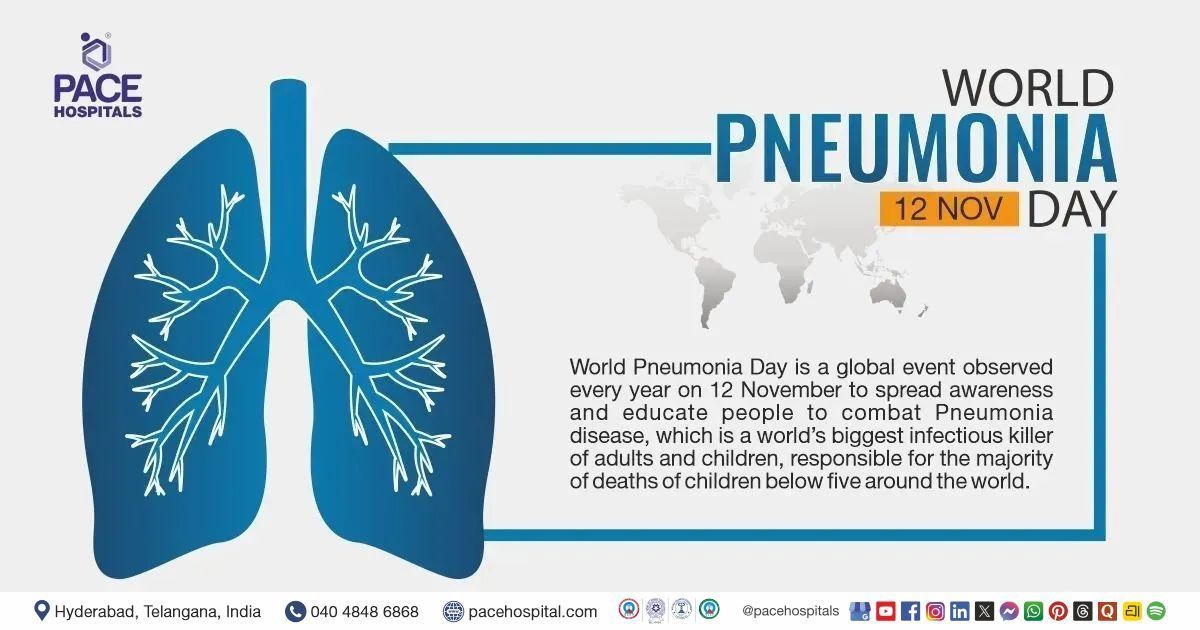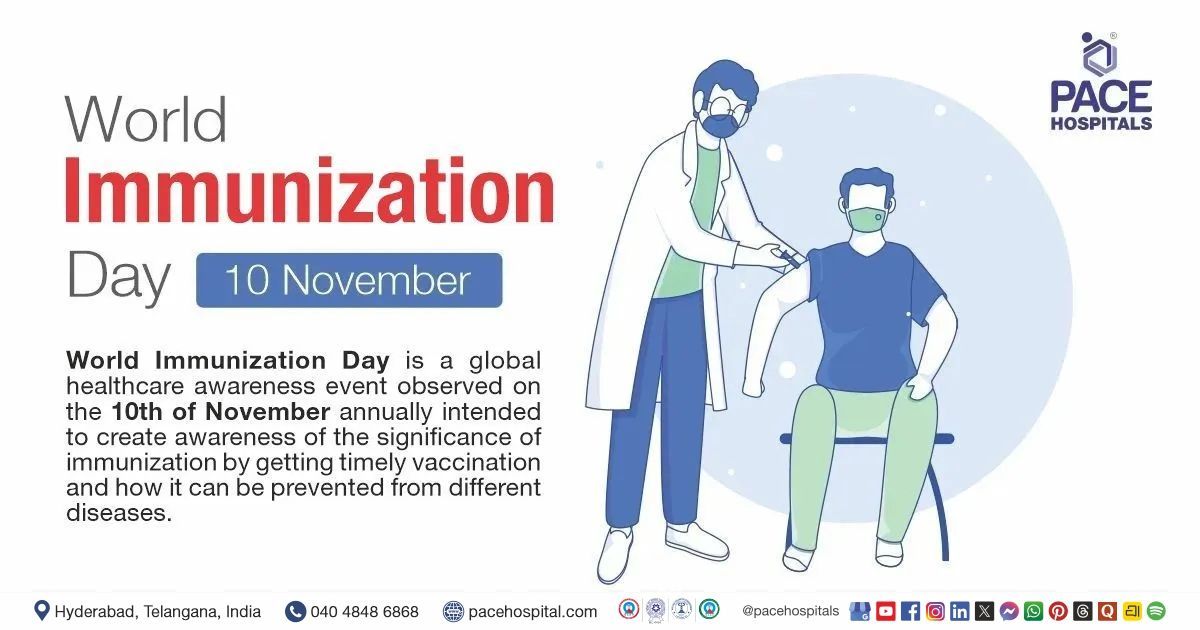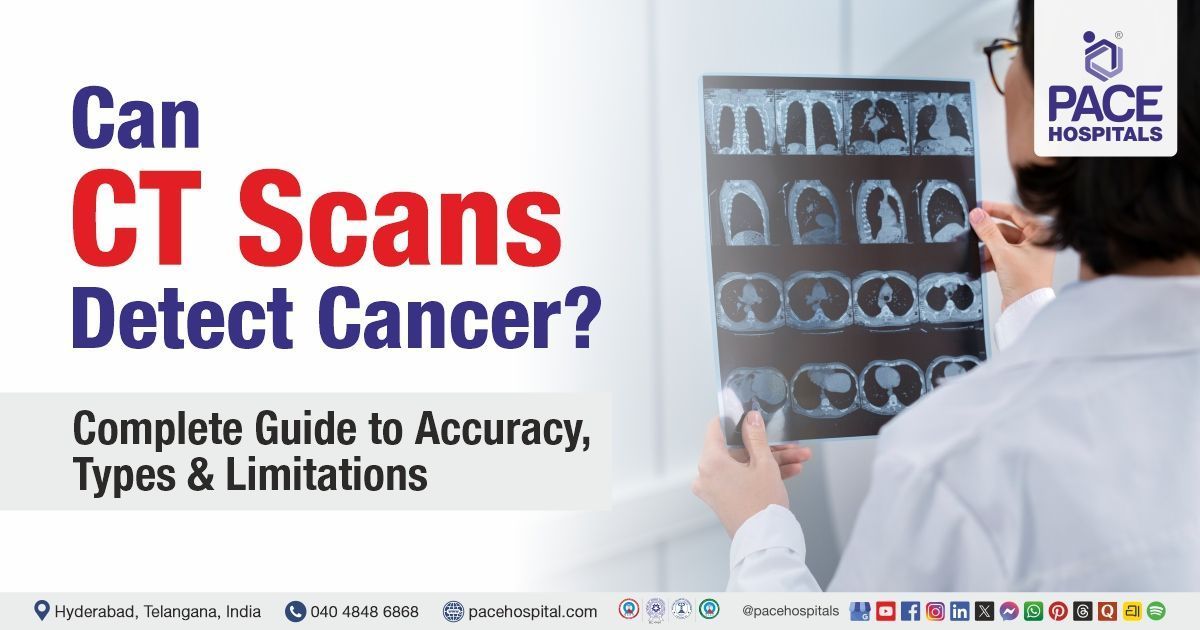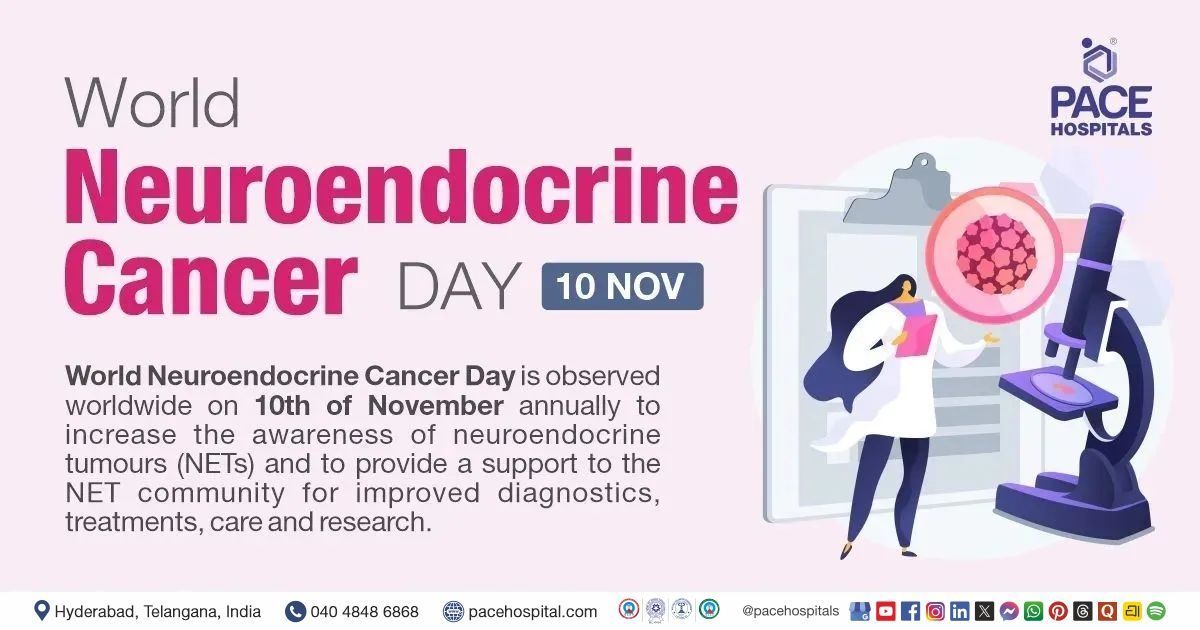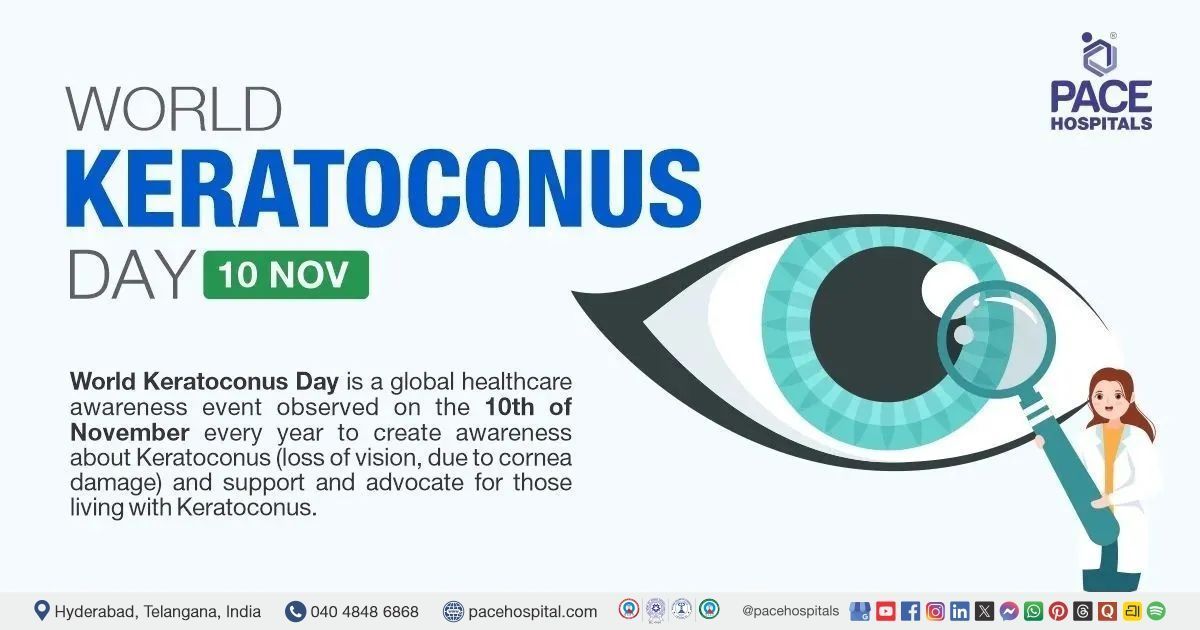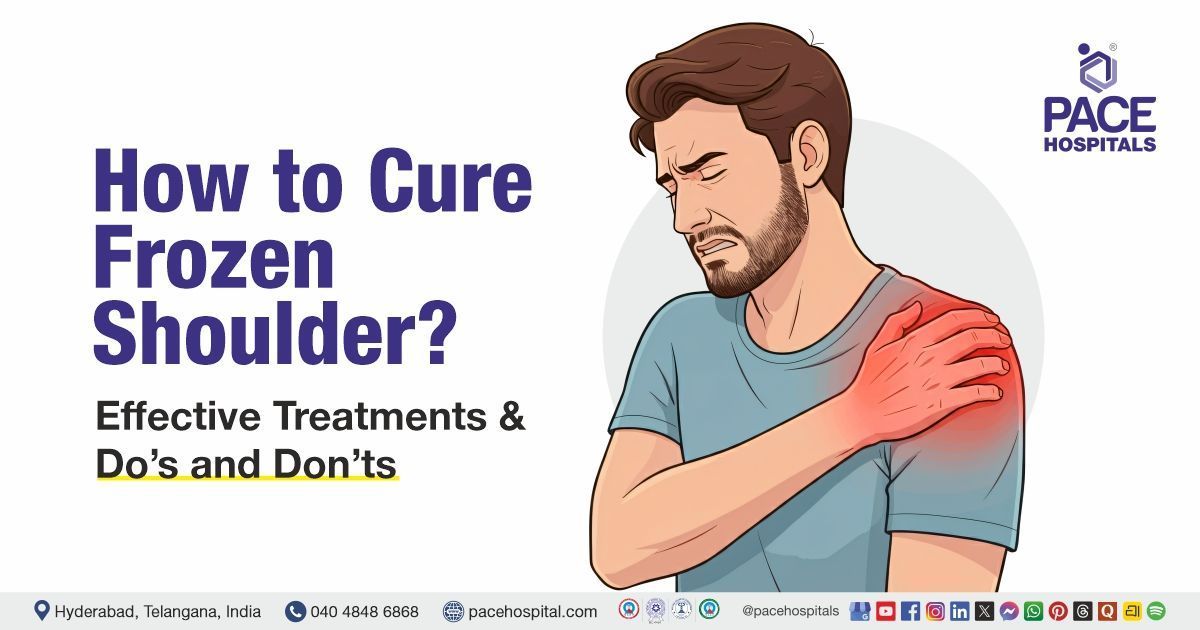Successful POEM Surgery for Achalasia in a 71-Y.O. Male with an Esophageal Motility Disorder
PACE Hospitals
The PACE Hospitals' expert gastroenterologist team successfully performed a Peroral Endoscopic Myotomy (POEM) on a 71-year-old male patient diagnosed with Type II achalasia cardia. The patient had been suffering from long-standing difficulty in swallowing both liquids and solids, accompanied by regurgitation, chronic constipation, and a significant weight loss of 13 kg. The procedure resulted in a notable improvement in his swallowing ability.
Chief Complaints
A 71-year-old male with a
BMI of 18.0 presented to the Gastroenterology Department at
PACE Hospitals, Hitech City, Hyderabad, with a long-standing history of dysphagia to both liquids and solids, accompanied by frequent regurgitation. He reported an unintentional weight loss of 13 kg and chronic constipation, necessitating regular use of laxatives. Additionally, he complained of persistent low back pain, episodes of dizziness, and a one-year history of unsteadiness while walking, raising concerns about an underlying neurological issue.
Medical History
The patient had a known history of hypertension and had been consistently taking antihypertensive medication. There was no history of diabetes or other cardiac conditions. However, the patient had been suffering from chronic calcific pancreatitis and had previously undergone hernioplasty.
Apart from the well-controlled hypertension, the patient’s medical history was otherwise unremarkable. The absence of diabetes and other cardiac issues helped narrow the differential diagnosis, guiding the clinical approach. Given his age and the presence of progressive dysphagia, significant weight loss, and associated symptoms, a comprehensive diagnostic workup was initiated to rule out any structural abnormalities and confirm a suspected oesophageal motility disorder.
On Examination
On physical examination, the patient appeared clinically stable with no signs of acute distress. He was conscious, alert, cooperative, and well-oriented to time, place, and person. Vital signs were within normal limits. Systemic examination, including abdominal assessment, revealed a soft, non-tender abdomen without any palpable masses or signs of discomfort, consistent with his gastrointestinal complaints but showing no evidence of acute abdominal pathology.
Diagnosis
Upon admission to PACE Hospitals, the patient underwent a comprehensive evaluation, including a detailed review of his medical history and a thorough clinical examination by the gastroenterology team. Based on his presenting symptoms, there was a strong clinical suspicion of an oesophageal motility disorder, specifically achalasia cardia, given his difficulty in swallowing, regurgitation, weight loss, and chronic constipation.
This prompted the decision to proceed with further diagnostic work-up, which confirmed the need for a Minimally Invasive Procedure for Achalasia Cardia.
Diagnostic evaluations using upper gastrointestinal endoscopy (UGI) and oesophageal manometry confirmed Achalasia Cardia Type II, a motility disorder marked by impaired relaxation of the lower oesophageal sphincter.
These diagnostic evaluations collectively confirmed the diagnosis of motility disorder and guided the medical team in planning an appropriate treatment approach.
Based on the confirmed findings, the patient was advised to undergo Achalasia Cardia Treatment in Hyderabad, India, under the expert care of the Gastroenterology Department, ensuring comprehensive management, relief of symptoms, and prevention of future complications.
Medical Decision-Making (MDM)
After a thorough consultation with the consultant gastroenterologists, Dr. Govind R Verma, Dr. Sudhir, Dr. Padma Priya, and Dr. Sashi Janjirala, a cardiologist, a comprehensive evaluation was conducted to determine the most appropriate diagnostic and therapeutic approach for the patient. The multidisciplinary team collaborated to address the patient’s complex clinical presentation, ensuring a well-rounded treatment plan tailored to his condition.
Based on their expert assessment, it was concluded that Peroral Endoscopic Myotomy (POEM) would be the most effective procedure to address the patient's condition.
Surgical Procedure
Following the decision, the patient was scheduled for POEM Surgery in Hyderabad at PACE Hospitals, under the expert care of the Gastroenterology Department.
After a thorough pre-anaesthetic assessment, cardiology clearance, and obtaining informed consent, the patient underwent a Peroral Endoscopic Myotomy (POEM) under general anaesthesia. The procedure involved creating a submucosal tunnel within the oesophageal wall to access the lower oesophageal sphincter. A precise myotomy was then performed on the circular muscle fibres, effectively relieving the obstruction caused by the hypertonic sphincter. The procedure was completed successfully without any intraoperative complications, ensuring favourable conditions for the patient's postoperative recovery.
Post-Operative Care
The postoperative recovery was uneventful, with no signs of infection or complications. Following the procedure, the patient remained on Nil by Mouth (NBM) for 2 days and was provided with intravenous fluids to maintain hydration. Antibiotics were administered as a preventive measure against potential infections. Supportive care, including pain management, was offered to ensure patient comfort and facilitate recovery.
An oral gastrograffin test conducted after 2 days revealed no evidence of contrast extravasation or retention, with a free flow of contrast across the gastroesophageal junction. Subsequently, the patient was transitioned to a liquid diet.
Throughout the hospital stay, the patient remained hemodynamically stable, with no adverse symptoms such as fever, vomiting, or abdominal pain. After a stable recovery, the patient was discharged in good condition with comprehensive medical advice for ongoing care and follow-up.
Discharge Medications
At discharge, the patient was prescribed antibiotics, proton pump inhibitors, nutritional supplements, and other supportive medications to aid recovery and prevent potential complications. Additionally, he was advised to regularly monitor his blood pressure and continue his prescribed antihypertensive medications to ensure effective blood pressure control, considering his history of hypertension.
Dietary Advice
He was instructed to follow a clear liquid diet for the first 2 days post-procedure, transitioning to a soft diet for the next 3 days, and then gradually progressing to a normal diet as his condition allowed.
Emergency Care
The patient was informed to contact the Emergency ward at PACE Hospitals in case of any emergency or development of symptoms like fever, abdominal pain, swelling, bleeding, or vomiting.
Review and Follow-up Notes
The patient was also advised to return for a follow-up visit with the Gastroenterologist in Hyderabad at PACE Hospitals, after one month to review his condition. Additionally, he was recommended to consult with a neurologist for further diagnosis and management of his cerebellar ataxia.
Conclusion
This case underscores the effectiveness of Peroral Endoscopic Myotomy (POEM) in managing achalasia cardia, offering significant symptom relief and improved quality of life. It also highlights the importance of a multidisciplinary approach in evaluating associated neurological symptoms for comprehensive patient care.
Clinical Importance of POEM in Treating Motility Disorders
Peroral Endoscopic Myotomy (POEM) is a minimally invasive endoscopic procedure that has emerged as a highly effective treatment for achalasia cardia and other oesophageal motility disorders. It allows direct access to the inner layers of the oesophageal wall, enabling precise myotomy of the hypertonic lower oesophageal sphincter, thereby relieving the obstruction that causes dysphagia. POEM offers significant advantages over traditional surgical methods, including reduced postoperative pain, shorter hospital stay, faster recovery, and minimal external scarring. It is particularly beneficial for elderly patients or those with comorbid conditions who may not tolerate open or laparoscopic surgery well. The POEM also provides flexibility in treating different subtypes of achalasia and spastic oesophageal disorders. With high success rates and durable outcomes, POEM represents a major advancement in therapeutic endoscopy. Its role in personalized, patient-centered care continues to expand with growing clinical experience and expertise among gastroenterologist/gastroenterology doctor.
Share on
Request an appointment
Fill in the appointment form or call us instantly to book a confirmed appointment with our super specialist at 04048486868

